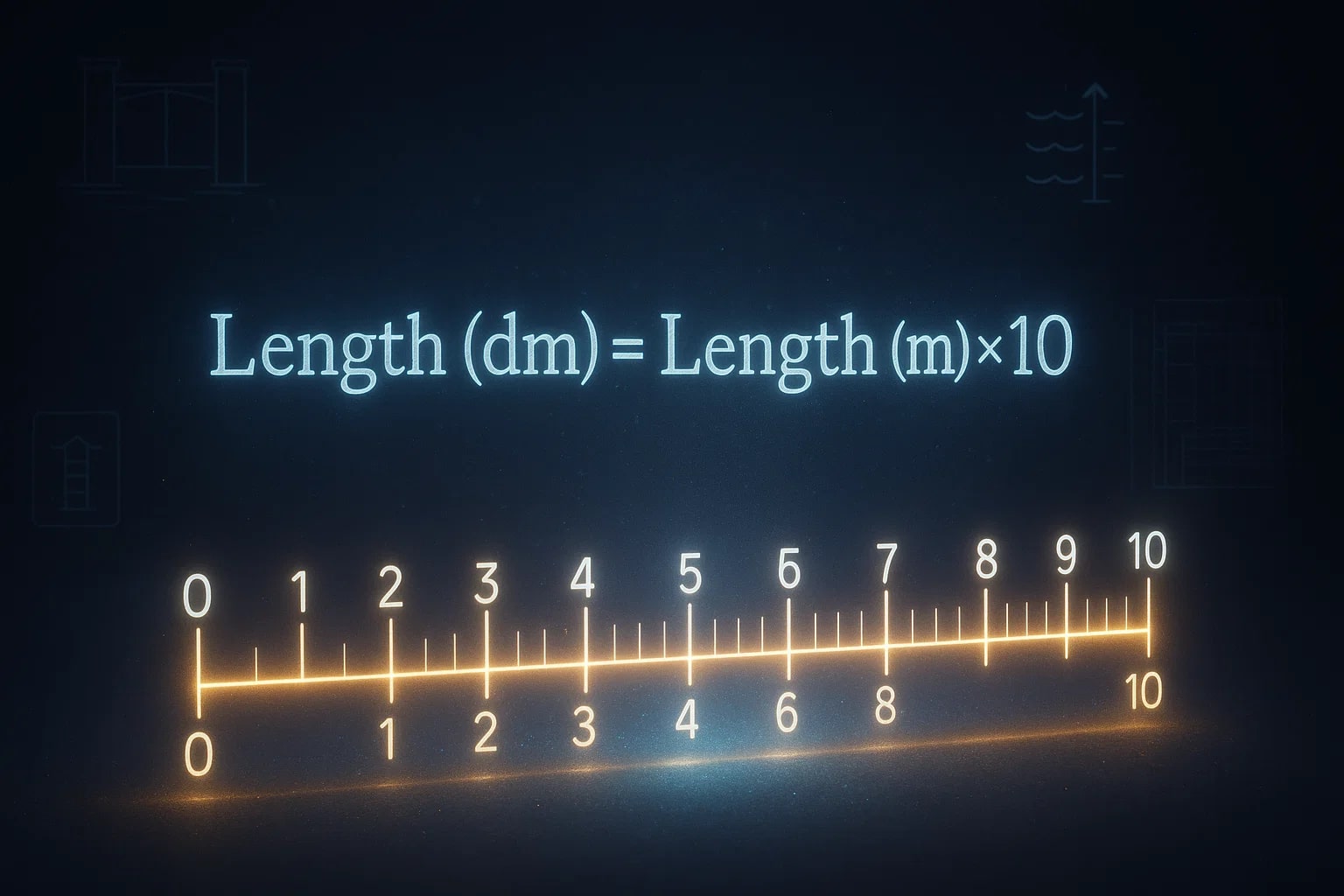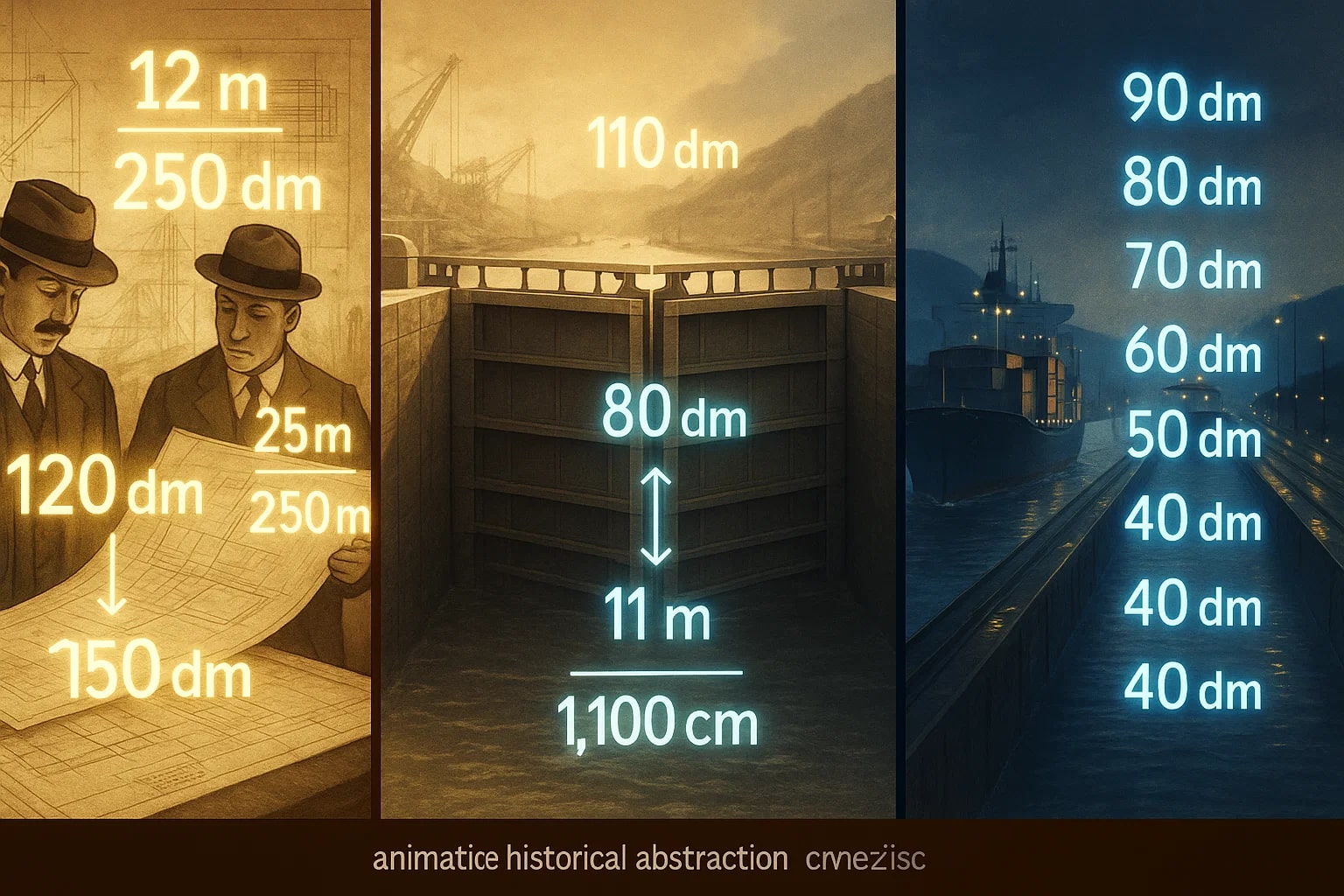meter to decimeter – How to convert m to dm
The meter to decimeter conversion is a straightforward calculation, but it’s surprisingly common in technical projects, architecture plans, and manufacturing processes. Instead of working with long decimal numbers in meters or large values in centimeters, many professionals choose decimeters for clarity and efficiency.

What is a meter?
A meter (m) is the international standard unit for measuring length, adopted by nearly every country. It’s defined by the distance light travels in a vacuum in 1/299 792 458 of a second, ensuring an exact and reproducible measure anywhere in the world.
Formula example:
1 m = 10 dm
What is a decimeter?
A decimeter (dm) is one-tenth of a meter. This unit is rarely used in everyday conversation but plays a vital role in scientific studies, engineering projects, and specialized sports measurements. Its middle-scale size makes it practical when meters are too large and centimeters too small.
Formula example:
Length (dm) = Length (m) × 10
How to convert meter to decimeter
The calculation is quick and simple:
Length in decimeters = Length in meters × 10
Example:
If a shelf is 1.85 m long:
1.85 × 10 = 18.5 dm
For more complex or multiple conversions, the Length Converter on Jetcalculator allows you to handle m to dm alongside dozens of other metric and imperial units in seconds.
Do you know?
-
The decimeter is often used in Scandinavian swimming competitions to measure race distances in short pools, providing more precise records than rounding to meters.
-
Certain fishery regulations in the Baltic Sea set minimum catch sizes in decimeters rather than centimeters, simplifying the rules for fishermen.
-
NASA has used decimeter-scale measurements for spacecraft components where fine adjustments are needed but millimeter precision is unnecessary.
-
In France during the early metric adoption, decimeter markings were placed on public building walls to help citizens visualize the new system.
-
The hull depths of some European ferries are displayed in decimeters, making it easier for port authorities to track safe docking levels.
-
In geology, sediment layers in rock cores are sometimes described in decimeter increments because this unit matches the natural scale of many formations.
-
The meter’s earliest prototypes were brass before being replaced by more stable platinum alloys — a change that improved precision in all derived units, including the decimeter.
-
Some vintage measuring tapes from the early 1900s, especially those made in Central Europe, had decimeter divisions prominently marked for carpentry use.
The Panama Canal and Mid-Scale Precision
When the Panama Canal was under construction in the early 20th century, engineers faced the challenge of managing both massive excavation projects and detailed lock measurements. While large-scale distances were recorded in meters and kilometers, many critical components — such as the gates’ depth and certain channel widths — were measured in decimeters.
Why? The decimeter allowed calculations to remain manageable without overloading engineers with decimal fractions or long centimeter values. For example, a lock width of 110 dm was easier to communicate than 11 m or 1 100 cm when precision and speed were essential.
During the canal’s operation, water levels in locks and gates were often monitored in decimeters to ensure safe passage for ships. Even today, some maintenance reports still reference measurements in decimeters for historical consistency. This mid-scale precision played a quiet but crucial role in keeping one of the world’s most important waterways functioning smoothly.
For all your conversions beyond m to dm, the Conversion Tools on Jetcalculator cover everything from temperature and weight to speed and volume.

Every Unit Has Its Place
The decimeter might not be as famous as the centimeter or kilometer, but it fills a valuable role where clarity and mid-range precision are needed. Whether it’s a ship’s draft in a harbor, the height of a wave, or the depth of a swimming pool, the meter to decimeter conversion makes calculations straightforward and results easy to interpret.
Next time you measure a 2.3 m diving board as 23 dm, remember that this unit’s practicality has shaped engineering feats and maritime safety for over a century — one-tenth of a meter at a time.

